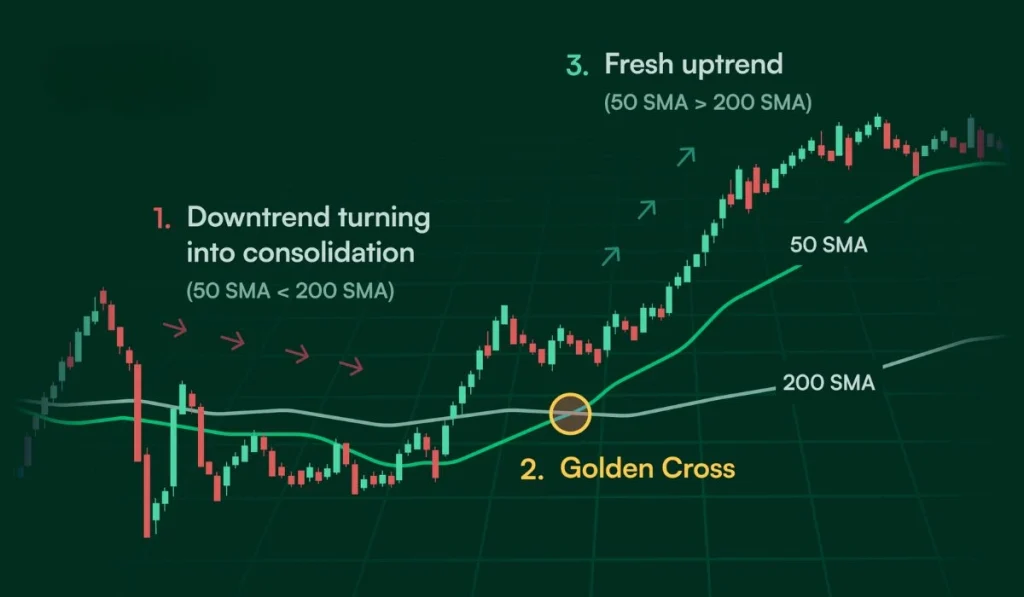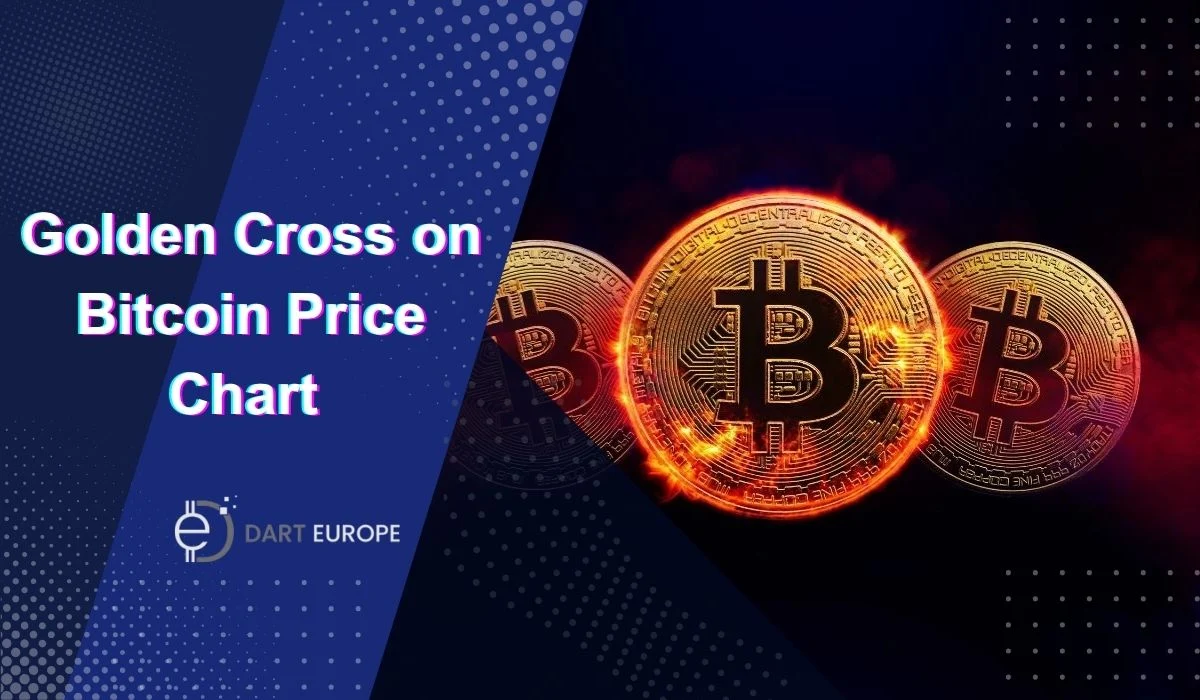Analysts are suggesting that Bitcoin is most likely to confirm a golden cross on its daily price chart by the end of May. This technical pattern is pivotal because its previous occurrences have often led to rallies for the flagship crypto asset.
What Is a Golden Cross and How Is It Measured?
A golden cross pattern on the charts excites traders as it promises profitable market opportunities lying ahead, largely due to its impressive success rate across traditional markets. It forms when the short-term moving average – the 50-day SMA – crosses above the long-term moving average – the 200-day SMA.

To put it simply, a golden cross pattern indicates that buying interest in a particular asset has risen over the previous 50 days compared to the previous 200 days. MA records the average change in an asset’s price over a specific period, which is measured by adding a set of prices recorded across a fixed timeframe – hourly, four-hour, daily, weekly, or monthly – and dividing the sum by the number of prices in the set.
Traditionally, traders focus on two specific moving averages when looking for golden crosses: the 50-day moving average, which becomes the short-term MA, and the 200-day MA, which turns into the long-term MA.
Bitcoin Chart Created Golden Cross for the First Time Since October 2024, Suggesting an Upcoming Rally
On May 20, Bitcoin’s 50-day SMA was aiming for a close above its 200-day SMA, forming a golden cross in the process. This is the first time since October 2024 that the pattern has been observed on the price chart, which culminated in a 60% rally for Bitcoin following the relection of Donald Trump as the President of United States on November 5, 2024.
Similarly, in October 2023, a golden cross preceded a 45% BTC price rally that was triggered by a court victory for digital asset manager Grayscale in its lawsuit against the US Securities and Exchange Commission (SEC) over the denial of its application for a spot Bitcoin exchange-traded fund (ETF). This event was monumental as it led to the approval of the first batch of spot Bitcoin ETFs in the US in January 2024.
In September 2021, a similar SMA crossover led to Bitcoin surging to its then all-time high of $69,000 and the subsequent altcoin season.
Golden Cross Does Not Necessarily Guarantee a Bull Run
However, it should be noted that a golden cross formation does not guarantee gains. While it has frequently appeared before a substantial rally in Bitcoin and altcoin markets, the risk of bulls falling into a trap remains.
Traders learnt this the hard way in February 2020 when a gold cross preceded a 62% crash for Bitcoin, primarily due to the global market rout driven by the COVID-19 lockdowns. This event underscores the importance using broader technical and macro indicators alongside the golden cross while factoring in the possibility of unexpected events.
Also Read: What Are Stablecoins? Top 5 Stablecoins in 2025 By Market Cap
Easing US-China Trade Tensions and Growing Money Supply Could Lead to a BTC Price Surge
The upcoming Bitcoin golden cross aligns with supportive market fundamentals, indicating a bullish signal. Catalysts such as the growing M2 global money supply and easing trading tensions between the US and China are prompting BTC to aim for a new record high valuation. A notable change this time around is that Bitcoin is signalling a price correction after its relative strength index (RSI) crossed above the overbought threshold of 70 in early May.
This suggests that instead of an immediate rally as soon as forming the golden cross, BTC may initially experience a pullback towards its SMA support level situated in the range between $92,400 and $95,000 as of May 20. The chances of short-term downside is furthered by a growing bearish divergence between the rising Bitcoin price and falling RSI. Nonetheless, technical indicators project Bitcoin to rally to a $150,000 peak in the coming months.

